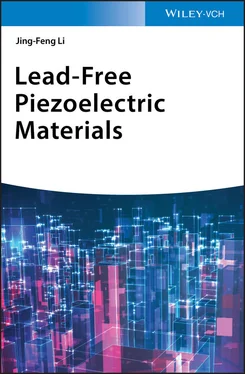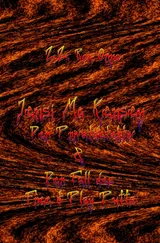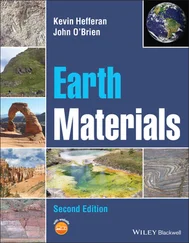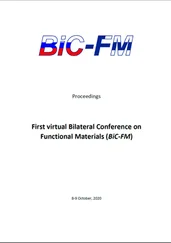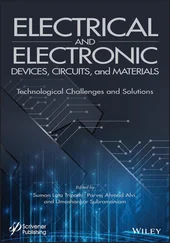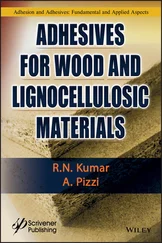Jing-Feng Li - Lead-Free Piezoelectric Materials
Здесь есть возможность читать онлайн «Jing-Feng Li - Lead-Free Piezoelectric Materials» — ознакомительный отрывок электронной книги совершенно бесплатно, а после прочтения отрывка купить полную версию. В некоторых случаях можно слушать аудио, скачать через торрент в формате fb2 и присутствует краткое содержание. Жанр: unrecognised, на английском языке. Описание произведения, (предисловие) а так же отзывы посетителей доступны на портале библиотеки ЛибКат.
- Название:Lead-Free Piezoelectric Materials
- Автор:
- Жанр:
- Год:неизвестен
- ISBN:нет данных
- Рейтинг книги:5 / 5. Голосов: 1
-
Избранное:Добавить в избранное
- Отзывы:
-
Ваша оценка:
- 100
- 1
- 2
- 3
- 4
- 5
Lead-Free Piezoelectric Materials: краткое содержание, описание и аннотация
Предлагаем к чтению аннотацию, описание, краткое содержание или предисловие (зависит от того, что написал сам автор книги «Lead-Free Piezoelectric Materials»). Если вы не нашли необходимую информацию о книге — напишите в комментариях, мы постараемся отыскать её.
Lead-Free Piezoelectric Materials
Lead-Free Piezoelectric Materials
Lead-Free Piezoelectric Materials — читать онлайн ознакомительный отрывок
Ниже представлен текст книги, разбитый по страницам. Система сохранения места последней прочитанной страницы, позволяет с удобством читать онлайн бесплатно книгу «Lead-Free Piezoelectric Materials», без необходимости каждый раз заново искать на чём Вы остановились. Поставьте закладку, и сможете в любой момент перейти на страницу, на которой закончили чтение.
Интервал:
Закладка:
I believe that now is the perfect time for reviewing the research of the lead‐free piezoelectrics, which is not only important for the young generation of researchers who are looking for a good starting point but also valuable for those who are already in the fields to think and innovate new strategies for enhancing the piezoelectric performances. Certainly, there have been many excellent review articles but most of them rather focused on some specific topics in individual material systems. There are four promising lead‐free piezoelectric systems, which are BaTiO 3, (K,Na)NbO 3, (Bi 0.5,Na 0.5)TiO 3,and BiFeO 3. These systems share similarities but they are not cut from the same cloth. To have a comprehensive picture of the world of the lead‐free piezoelectrics, we need a book that covers the fundamental knowledge about piezoelectrics and also the cutting‐edge research progress about lead‐free piezoelectrics. With such motivation, I wrote this book.
This book consists of seven chapters, starting with two introductory ones about the fundamentals of piezoelectricity and lead‐free piezoelectrics. These two chapters should be beneficial for the readers, especially for those who wish to reinforce their basic knowledge. The first chapter will provide the fundamental background for piezoelectricity, emphasizing on the piezoelectric effects, the relationship between ferroelectrics and piezoelectrics, the meanings of the piezoelectric parameters, and common characterization techniques. In the second chapter, an overview of the lead‐free piezoelectrics will be given, including the background, the general classification, and the research progress of the lead‐free piezoelectrics. Next, four representative lead‐free piezoelectric systems will be introduced in the following chapters. Each chapter consists of a brief introduction of the history and crystal structure as well as the characteristics of the focused lead‐free piezoelectric system. Finally, this book will overview some applications based on the lead‐free piezoelectrics. By comprehensively covering the aforementioned contents, I expect this book to be informative to the readers. Other lead‐free piezoelectric materials such as AlN and ZnO are not involved in this book, since they are non‐perovskite‐structured and largely differ from the focused material systems in properties and applications.
I would like to thank my group members for their contributions to this book. Special thanks go to Dr. Yichi Zhang (postdoc), Dr. Zhen Zhou (graduated Ph.D. student), Dr. Lei Zhao (postdoc), Dr. Lisha Liu (postdoc), and Dr. Ke Wang (associate professor) for their valuable devotion to the writing of Chapters 3–7, respectively. Also, I deeply thank Mr. Hao‐Cheng Thong (Ph.D. student), Dr. Qian Li (assistant professor), Mr. Yi‐Xuan Liu (Ph.D. student), Dr. Qing Liu (graduated Ph.D. student), Dr. Fang‐Zhou Yao (graduated Ph.D. student), and Mr. Hua‐Lu Zhuang (Ph.D. student) for their great helps in editing the manuscripts.
Finally, I also want to express my thanks to my family and colleagues for their continuous encouragement and extensive support. I sincerely wish my book will be helpful to the readers who are interested in ferroelectrics and piezoelectrics.
Jing‐Feng Li
30 April 2020
Beijing, China
1 Fundamentals of Piezoelectricity
1.1 Introduction
In 1880, Pierre Curie and Jacques Curie discovered the (direct) piezoelectric effect in quartz (SiO 2) and other single crystals, which generates an electric charge proportional to a mechanical stress. The converse piezoelectric effect, a geometric strain proportional to an applied voltage, was also soon realized. Since then, quartz has been one of the most well‐known and widely used piezoelectric materials. Many decades later, polycrystalline piezoelectric ceramics (oxides) have been discovered. The first one is BaTiO 3that was discovered during the World War II, which was used as dielectric materials for solid condensers at first [1]. In 1947, Roberts found that BaTiO 3ceramics (polycrystals) showed good piezoelectricity, about 100 times higher than that of quartz, after they were poled under a high voltage [2]. Since then, BaTiO 3ceramics have been widely applied to transducers, sensors, and filters, particularly in Japan. In 1952, Shirane et al., reported that solid solutions can be formed between PbTiO 3and PbZrO 3[3, 4]. One year later, ferroelectricity and antiferroelectricity were found in the solid solutions [5]. In 1954, Jaffe et al. studied the piezoelectric properties of PbTiO 3–PbZrO 3solid solution ceramics, and found that its piezoelectric constants were twice as high as that of BaTiO 3, and its Curie temperature (above which the piezoelectricity disappears) was over 300 °C [6]. Now, the PbTiO 3–PbZrO 3solid solutions, abbreviated as PZT, are the most widely used piezoelectric ceramics [7–10]. The PZT ceramics show greatly enhanced piezoelectric and dielectric properties when the Zr/Ti ratio is close to 52/48, where exists a morphotropic phase boundary (MPB) separating the rhombohedral and tetragonal regions [7]. It is generally understood that the piezoelectricity enhancement stems from the effect of phase coexistence enabled by the existence of MPB.
Despite the facts that BaTiO 3is lead‐free and was also discovered before PZT, the markets of piezoceramic applications have been dominated by PZT‐based ceramics mainly because of its following advantages compared with BaTiO 3: (i) excellent and adjustable piezoelectric properties, (ii) relatively high Curie temperature, and (iii) relatively low sintering temperature. Recently, environmental protection has become a major global concern, and environmental‐friendly materials and technology are one of the main tasks to be resolved in this new century. The manufacturing, handling, and disposal of PZT ceramics, which contain >60 wt% of lead, pose harmful influences on the workers' safety and soil environment as well as water supply. That is why many countries have incentivized the development of lead‐free piezoelectric materials [11–18].
For the R&D of lead‐free piezoelectric materials, it is very important to get a full understanding of piezoelectric principles and the piezoelectric mechanisms of existing piezoelectric materials, especially PZT ceramics. However, because PZT ceramics have many important applications, and in some sense, its application research has moved faster compared with the fundamental research on its piezoelectric mechanism, there are still a lot of things remaining very unclear. For example, the phase diagram of PZT around the MPB has been renewed even after half a century passed since the discovery of PZT [19–21], and rigorous descriptions still lack for unambiguous understanding of the MPB's contribution to piezoelectricity. The fundamental structure–property mechanisms revealed in lead‐containing piezoelectric materials can be also operational in lead‐free systems and at a minimum, should be considered as starting guidelines for the development of lead‐free piezoelectrics from the aspects of composition modification, microstructure tailoring, property characterizations, device applications, etc.
1.2 Piezoelectric Effects and Related Equations
The piezoelectric effect or piezoelectricity is the generation of electric charges on the surface of certain non‐conducting materials in response to applied mechanical stress, or conversely, the generation of a mechanical strain in such materials when they are subjected to an electric field, as schematically shown in Figure 1.1[17]. The piezoelectric effect is a reversible process, so the materials exhibiting the direct piezoelectric effect also exhibit the converse piezoelectric effect. As such, piezoelectricity is referred to as both direct and converse effects, even though the word “piezoelectricity” often leads us to the meaning of the direct piezoelectric effect of the internal generation of electrical charges resulting from an applied mechanical force.
Читать дальшеИнтервал:
Закладка:
Похожие книги на «Lead-Free Piezoelectric Materials»
Представляем Вашему вниманию похожие книги на «Lead-Free Piezoelectric Materials» списком для выбора. Мы отобрали схожую по названию и смыслу литературу в надежде предоставить читателям больше вариантов отыскать новые, интересные, ещё непрочитанные произведения.
Обсуждение, отзывы о книге «Lead-Free Piezoelectric Materials» и просто собственные мнения читателей. Оставьте ваши комментарии, напишите, что Вы думаете о произведении, его смысле или главных героях. Укажите что конкретно понравилось, а что нет, и почему Вы так считаете.
